Top 8 Most Beautiful Historical Sites in Mongolia
Remote yurt camps are hidden away among the immensity of the terrain for you to enjoy the time-honored traditions of Mongolian nomads and their legendary ... read more...kindness and hospitality. With this list of the most beautiful historical sites in Mongolia, you can plan your journey to this unknown Asian tourist destination.
-
Ranked first in the list of most beautiful historical sites in Mongolia, it is impossible not to mention Erdene Zuu monastery. The Erdene Zuu monastery is most likely Mongolia's oldest surviving Buddhist monastery. It is part of the Orkhon Valley Cultural Landscape World Heritage Site and is located in vörkhangai Province, roughly 2 kilometers northeast of the town of Kharkhorin and next to the ancient city of Karakorum. The monastery belongs to the Gelug school of Tibetan Buddhism.
After meeting with the 3rd Dalai Lama and declaring Tibetan Buddhism the official religion of Mongolia, Abita Sain Khan, the ruler of the Khalkha Mongols and grandfather of Zanabazar, the first Jebtsundamba Khutuktu, ordered the building of the Erdene Zuu monastery in 1585. Stones from the neighboring ruins of Karakorum, the ancient Mongol capital, were utilized in its construction. Planners attempted to build a surrounding wall that resembled a Tibetan Buddhist rosary with 108 stupas (108 is a holy number in Buddhism), but this goal was likely never met. The temple walls of the monastery were painted, and the Chinese-style roof was covered with green tiles.
During one of the several conflicts between Dzungars and Khalkha Mongols in 1688, the monastery was devastated. The abandoned monastery's wooden defenses were demolished by locals. It was renovated in the 18th century and included 62 temples and up to 1000 monks by 1872.
Location: Övörkhangai, Mongolia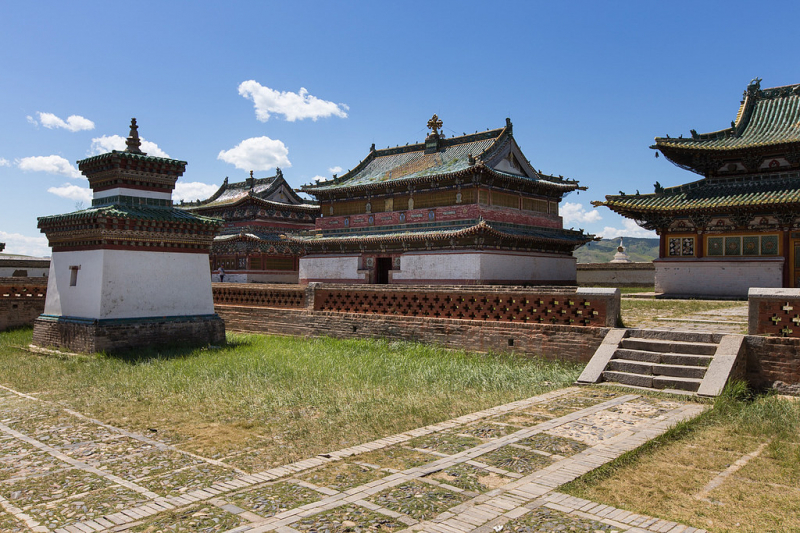
Photo: Flickr 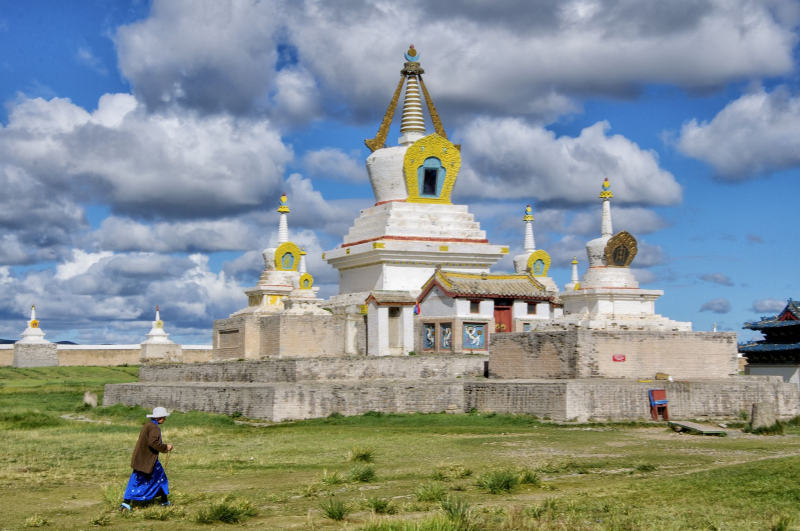
Photo: Pinterest -
To the majority of the globe, Genghis Khan is remembered as a harsh and vicious ruler whose terror campaigns and widespread slaughter of civilian populations may have resulted in the deaths of up to forty million people. However, he is regarded as a national hero in Mongolia, having ruled over the biggest continuous kingdom in history and established the Mongols as a political and cultural force. Despite being shown on hundreds of monuments and appearing on everything from liquor bottles to cigarette packets, it appears that the public's need for more has not yet subsided.
Genghis Khan statue - a massive statue of Khan riding a horse was constructed fifty-four kilometers outside the capital, Ulaanbaatar, in 2008. It is the world's tallest equestrian statue, standing forty meters tall and more than double the height of the previous record holder in Uruguay. It reportedly cost $4.1 million to build and was made of 250 tons of stainless steel. Visitors can visit an archaeological museum at the base of the statue, try on traditional Mongolian costumes, tour the numerous portraits of the Khan lineage, or dine at the restaurant on the second floor before taking an elevator to the top of the horse's head, where they are greeted with a panoramic view of the surrounding landscape.
The Genghis Khan statue complex is located 54 kilometers from Ulaanbaatar, Mongolia's capital city. This location is also well-known for its picture opportunities with wild birds. Visitors may pose for photos with a golden eagle or vulture.
Location: Ulaanbaatar, MongoliaVideo: Around the World in 800 Days 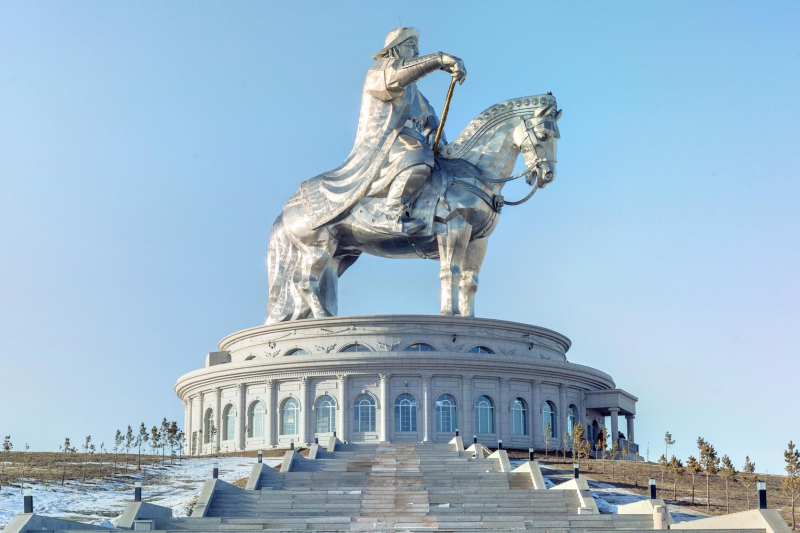
Photo: Trip.com -
Amarbayasgalant monastery, also known as the "Monastery of Tranquil Felicity," is one of Mongolia's three greatest Buddhist monastic institutions. The monastery complex is located in the Iven Valley, along the Selenge River, at the foot of Mount Büren-Khaan in the Selenge Province's Baruunbüren sum (district) in northern Mongolia. Erdenet, about 60 kilometers to the southwest, is the nearest town.
The monastery was established and sponsored by decree of the Yongzheng Emperor of Qing China to serve as Zanabazar's (1635–1723) ultimate resting place. According to legend, while looking for a suitable location for the monastery, the exploring group stumbled upon two young boys, Amur and Bayasqulangtu, playing on the steppe. They were inspired to erect the monastery on that precise place and call it Amur-Bayasqulangtu after the two youngsters. More than likely, the spot was chosen because it was near where the lama's moving Da Khuree (his mobile monastery and primary dwelling) was when he died. The structure was built between 1727 and 1736, and Zanabazar's remains were moved there in 1779.
The Amarbayasgalant monastery is devoted to Maitreya, Zanabazar's principal tutelary god. Unlike Erdene Zuu Monastery, which is a collection of temple halls of various styles, Amarbayasgalant has a high level of aesthetic consistency. The dominant style is Chinese, with Mongol and Tibetan elements. The monastery is similar to Yongzheng's own palace, the Yonghegong in Beijing (converted by his son the Qianlong Emperor into a Buddhist monastery).
Location: Selenge, Mongolia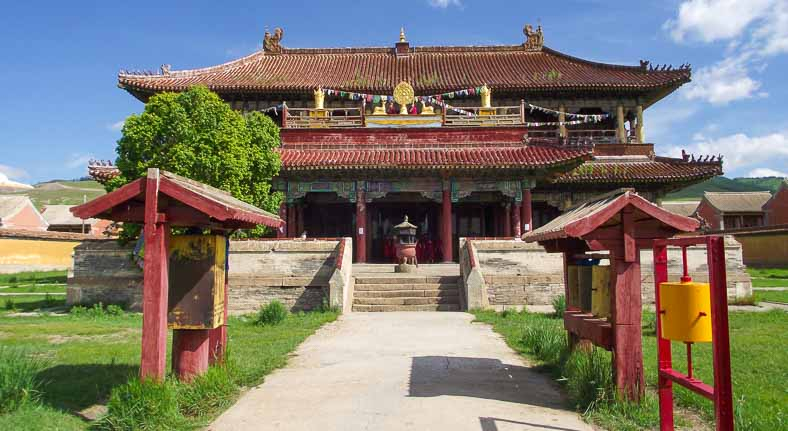
Photo: View Mongolia Travel 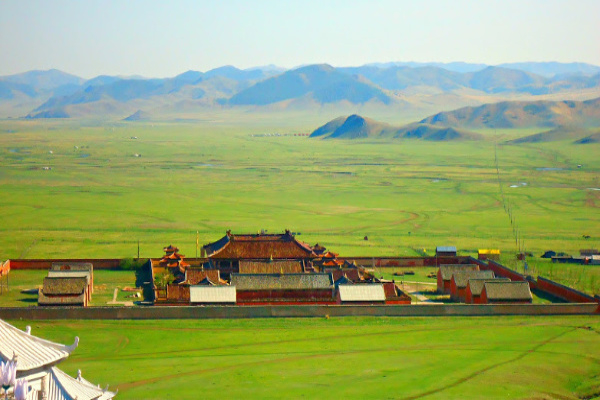
Photo: Travel Buddies Mongolia -
Manzushir monastery was demolished by Mongolian communists in 1937. Its remains are located on the south slope of Bogd Khan Mountain, some 15 kilometers (as the crow flies, 43 kilometers by automobile) south of the Mongolian capital Ulaanbaatar. This is one of the most beautiful historical sites in Mongolia.
The monastery, devoted to Manzushir, the Bodhisattva of Wisdom, was founded in 1733 by the sainted monk Luvsanjambaldanzan as the permanent dwelling of the Bodhisattva of Wisdom's Reincarnation. In 1750, Mongolia's religious leader, the Jebtsundamba Khutuktu, commonly known as the Bogd Khan, took personal control over it. Over time, the monastery grew to become one of the country's largest and most prominent monastic institutions, with 20 temples and more than 300 monks. Religious rites frequently involved over 1000 monks. The lamasery featured a remarkable and rare collection of Buddhist texts, including golden lettering on silver leaf.
Today, the monastery is a popular tourist and trekking attraction, complete with an on-site hostel. The Manzushir monastery complex was returned to the Buddhist temple, and the remaining things within it (the repaired temple, the ruins of walls and structures, representations of Buddhist deities, and sacred inscriptions on the rocks) are still regarded as objects of devotion.
Location: Ulaanbaatar, Mongolia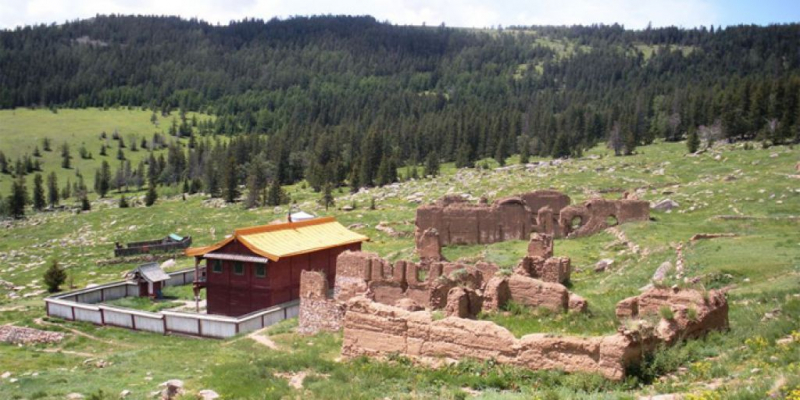
Photo: Mongolia Guide 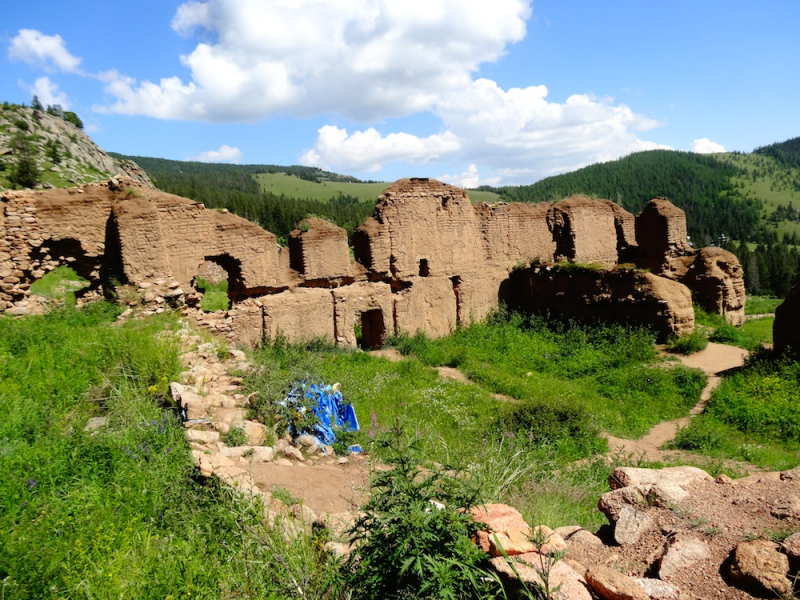
Photo: Tali Lansman -
The Ariyabal Meditation temple is located 60 kilometers from Ulaanbaatar, near Melkhii Khad or Turtle Rock on Khuukhen Mountain. Stairs leading up to the temple were erected alongside it between 1998-2004 with stones shaped like an elephant's trunk. When you enter the temple's gates, there are information boards with Buddhist quotations along the way.
The rear wall of the temple has statues of Buddha and the eight-armed Ariyabal or Migjid Janraisig. At the bottom of the roof, strange depictions of three realms, or heaven, earth, and hell, surround the temple construction. Additionally, whirling the 108 prayer wheels around the temple is thought to be similar to saying the mantra "Om mani Padme hum" several times.
The Myal Bogd cave, located northwest of the temple, is one of the key "symbols" of meditation for Mahayana Buddhists. Portraits of the three great Bodhisattvas Manzushir (Manjushri), Ariyabal, and Ochirvaani (Vajrapani) are found hanging on the cave wall, representing wisdom, compassion, and indestructible might. There is also a Buddha footprint constructed with 80 symbols and 32 patterns based on the real size of Buddha's feet.
The Ariyabal Meditation temple was determined to be erected after a Tibetan monk thought the place was ideal owing to its high natural energy and proximity to a spring.Location: Terelj National Park, Mongolia
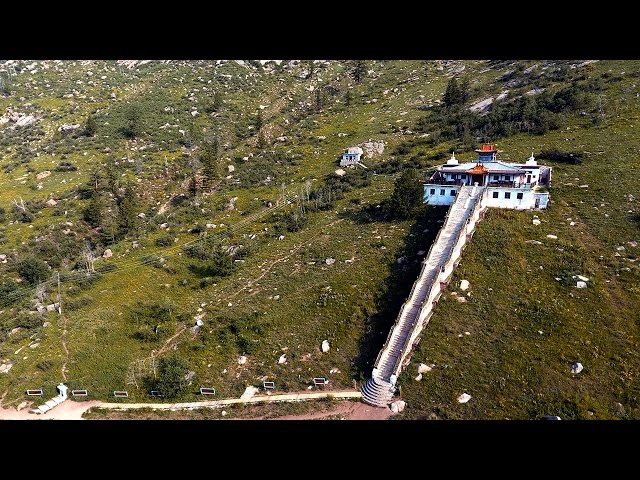
Photo: Destimap 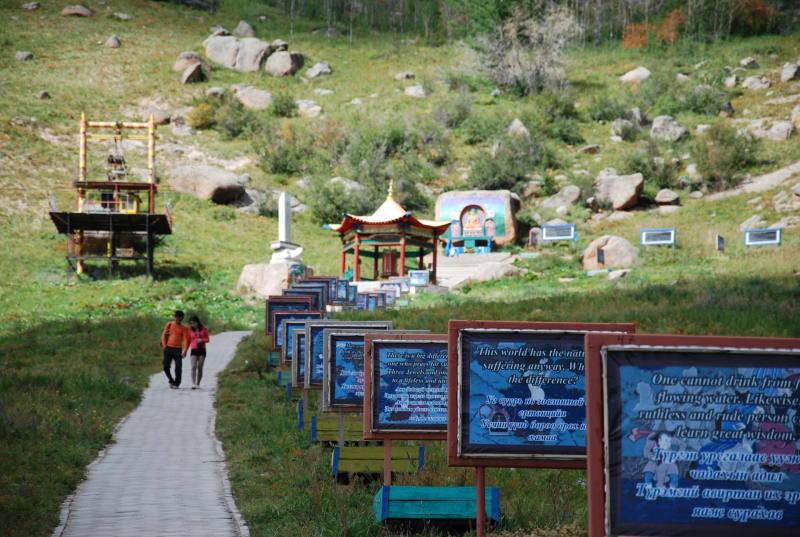
Photo: Escape To Mongolia -
The Khavtsgait petroglyphs are located 30 kilometers from Bulgan soum in Umnugovi aimag. The Khavtsgait petroglyph is elegantly engraved on several rocks on the top of Khavtsgait mountain, which is part of the Gurvan Saikhan Mountain range in the west. Its petroglyphs date from the Late Bronze Age through the early Iron Age (4000-5000 BC).
According to geologists, the Gurvan Saikhan mountain range and Khavtsgait mountain are very young, having formed 400-500 million years ago. Sandstones make up the Khavtsgait mountain range. Because of millions of years of exposure to the blazing sun and strong winds, the granite surfaces of Khavtsgait Mountain are black and simple to draw on with any instrument, creating light markings.
This location has been discovered and examined by petroglyph researchers since 2004. Locals, on the other hand, have known this location for a long time. The adjacent mountains of Khavtsgait are also rich in rock art and petroglyphs.
The engravings range in size from two millimeters to the actual size of horses. The largest sloping flat rock, known as the "Art Gallery," faces southwest. The shape, depiction, talent, and design of the paintings portrayed on that rock may have been done over decades by various persons.Location: Gobi Gurvansaikhan National Park, Mongolia
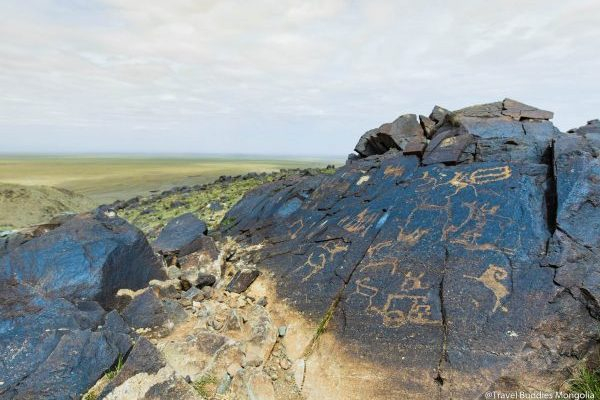
Photo: Travel Buddies Mongolia 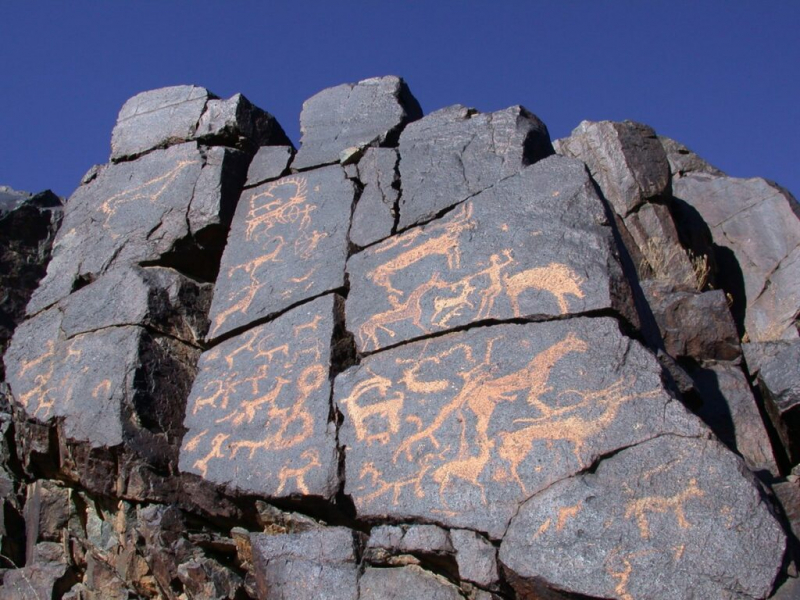
Photo: Mongolia Tours -
Dashchoilin monastery was an essential feature of the modern Ulaanbaatar city. Dashchoilin monastery has previously housed various scientists and monks from all around Mongolia. Every year, Dashchoilin Monastery in Ulaanbaatar holds festivities like the Maitreya and Tsam religious mask dance. The Zuun Khuree College was founded in 1998 to provide comprehensive education for the community, including fundamental Buddhist teachings, Buddhist philosophy, and language training in Indian, Tibetan, and Mongolian.
This is one of just three extant monasteries of its kind in Mongolia. Originally erected at another site in 1890, it used to be an important holy center in Ulaanbaatar, with a capacity of 100 to 600 lamas or monks inside its walls. However, due to political pressure, this monastery ceased operations and was demolished in 1938.
It is presently located in the Sukhbaatar district, 8th subdistrict, quite close to the Chinese Embassy, and near Baga toiruu street, from where the colorful roofs of the monastery may be seen. It is unquestionably a lovely location to unwind.
Location: Ulaanbaatar, Mongolia
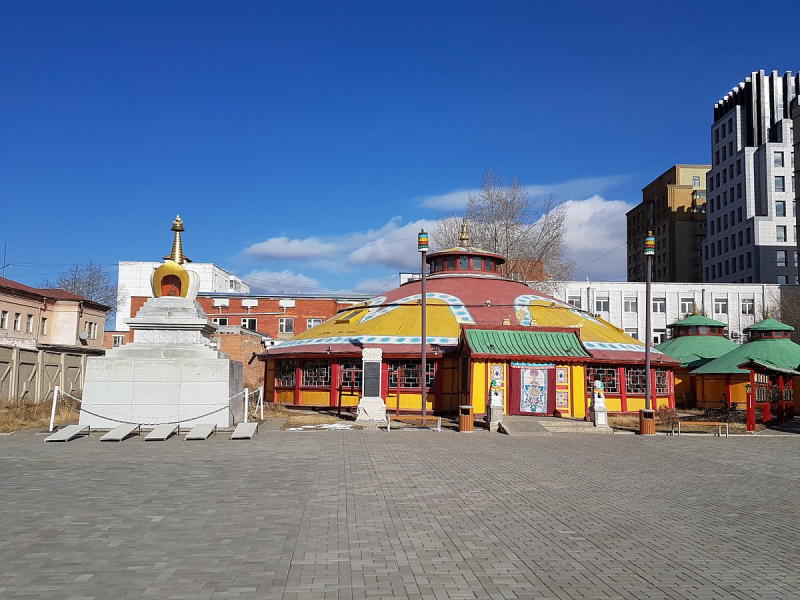
Photo: TripAdvisor 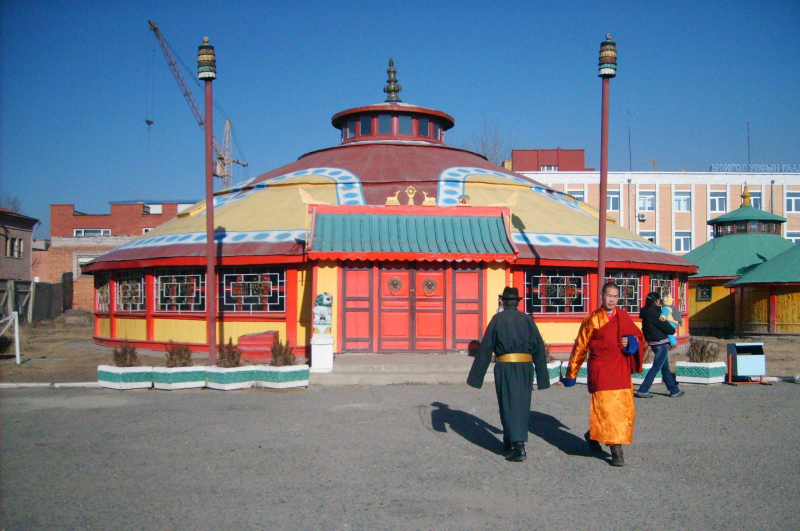
Photo: Mapcarta -
Aryabal Meditation temple, in addition to its natural beauty, is one of the most attractive places in Gorkhi-Terelj National Park. This hidden in the highlands shrine is near Turtle Rock, 56 kilometers from Ulaanbaatar. The surroundings are rich in granite formations nestled among gorgeous valleys and hills with flowing rivers and forest groves.
Aryabal is a Buddhist God who hears all of humanity's pleas and relieves them of their misery. It was designed in the form of an elephant's head. In Buddhism, the number 108 is considered fortunate. As a result, the 108-step staircase leading to the temple represents the elephant's stretched trunk. In addition, placards containing 144 Buddhist teachings written in English and Mongolian flanked the way to the temple.
The Aryabal Meditation temple is designed in a Tibetan style, with white square shaped and the white-colored main building and porcelain roofs painted with Buddhist and religious symbols. The decorating at the temple residences is astounding, particularly representing what is paradise and what is damnation.Location: Ulaanbaatar, Mongolia
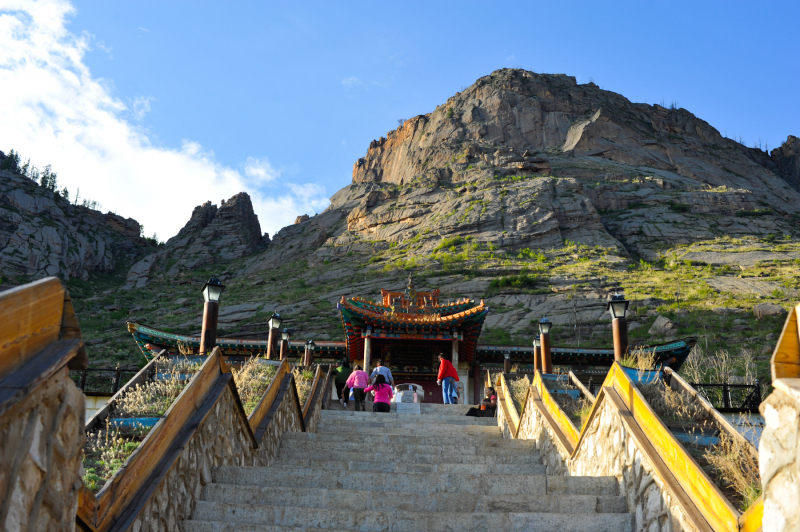
Photo: Wikipedia 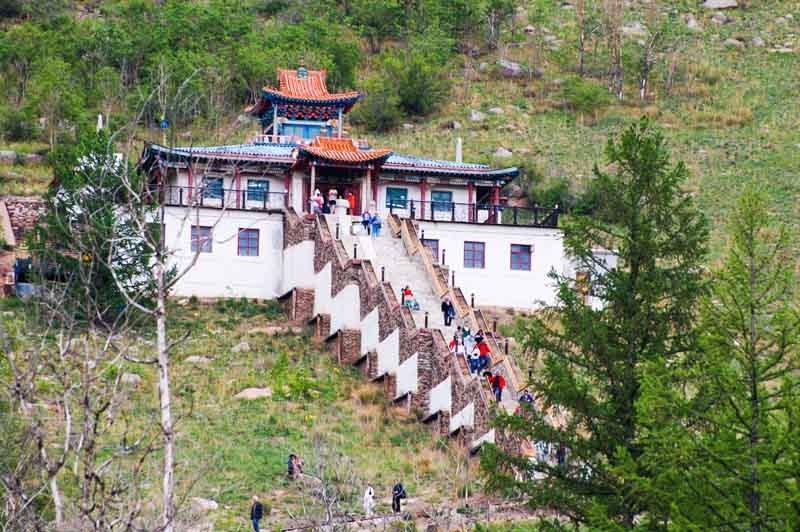
Photo: Horseback Mongolia





























